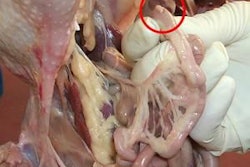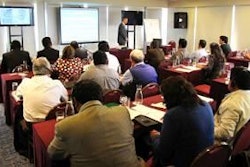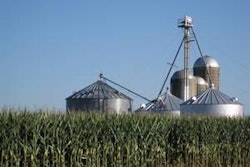Well, we appear to be back to the UB price projected before the August SE recall. This is due in part to the shifting of media reports from SE to the November midterm elections, the absence of additional recalls (other than a single small event announced on November 5), the sharp decline in incident cases reducing the frequency of releases by the FDA, positive publicity by the AEB and the depletion of possibly 4 to 5 million hens.
The UEP has announced an initiative to address prevention of SE. This is commendable but late. Their belated action parallels the response of producers in the UK in developing the “British Lion” program. This was only developed and implemented after the Junior Minister of Health, Edwina Currie torpedoed egg consumption in 1988 in that nation by public statements on salmonella infection gaining her the sobriquet of “Eggwina”. It would be uncharitable to question the intentions or commitment of the UEP but to quote Macbeth, “Then ‘twere well it were done quickly.” Any of a number of practicing poultry health specialist veterinarians could tell the industry what to do today, least of all when the 5-Star Total Quality Assurance Food Safety Program was originally rolled out. The same can be said for the SQF certification program which ignores the fact that SE is egg-borne. To make the “S” in SQF more “Safety” than “Superficial,” plant management must confirm the SE-free status of supply flocks before purchasing or processing eggs.
Now that much of the dust (presumably contaminated) has settled, it would be appropriate to predict some of the realities facing the industry. These include:
- Increased scrutiny by the FDA or even a unified federal food safety agency;
- Adverse publicity from additional recalls;
- Intensified opposition from the HSUS regarding caged housing using SE as a justification for a ban at the state or federal levels; and
- The possibility that SE will become the “new cholesterol” as a restraint to increased consumption.
There are a number of technical opportunities which will emerge from the 2010 fiasco which will contribute to the production of eggs free of SE:
- More effective (sensitive and specific) diagnostic procedures including PCR;
- Realistic adoption of effective biosecurity;
- Upgrading immunization and quantifying immune response;
- Enhanced QC and monitoring of the environment of flocks;
- Positive trace-back through the complete chain of production; and
- Application of epidemiologic principles by trained professionals to suppress SE and less concern for minimizing cost and adhering to traditional and outmoded production practices.
A comment from a prominent and progressive producer is pertinent. He stated, “The industry could have built in better biosecurity and rodent control and operated at a higher standard of prevention for a lot less than the $150 million loss we experienced over SE in 2010” (expletives deleted).
I trust that we are all together on how to proceed.
As usual contrary opinions are welcome.
Wishing all the readers and supporters of Egg Industry the compliments of the season and looking forward to a less turbulent and profitable 2011.


















